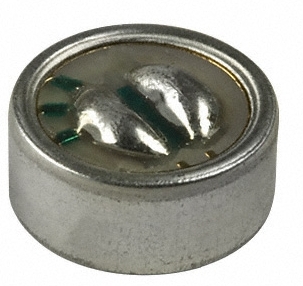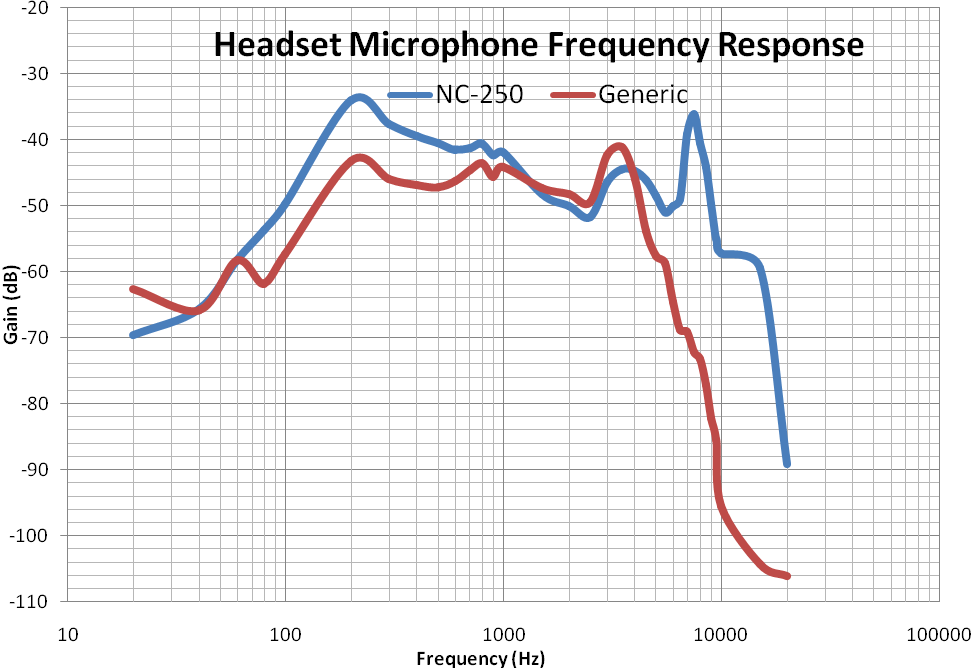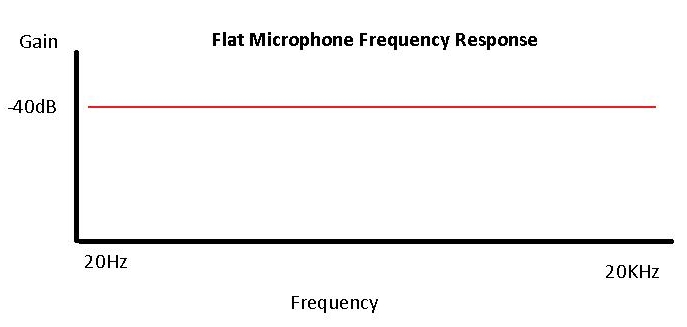What is Microphone Frequency Response?

Microphone Frequency Response is the amount of gain that a microphone produces in response to all the various frequencies in a given bandwidth.
So, for example, a microphone may be tested for its frequency response to a bandwidth of 20Hz to 20KHz to see what gains it produces at each frequency. A microphone may have a flat response in which it produces roughly the same gain at each frequency, or a microphone have may a remarkable difference in the gains it produces for low frequencies and high frequencies. A microphone may produce great gain for bass and low gain for treble. This is why frequency responses are performed on microphones. If a microphone is going to be used for speech, a voice microphone, it must have great gain for bass, since human voice is in the low frequencies. If a microphone is going to be used to record music, it must have great gain from bass to treble, since music normally has all the tones from lows to highs. This is why microphone frequency responses are run.
Below is an example graph of Microphone Frequency Responses performed on two headsets.

Based on this data, we can now see what gains the microphones produce for all the frequencies from 20Hz to 20KHz. We see that the NC-250, the blue line, has superior gain to the Generic Headset, the red line, for all frequencies in the bandwidth except from 20Hz to 30Hz and from 1.5KHz to about 4KHz. So except for those very low frequencies and mids, the NC-250 has superior gain over the generic headset.
Though the above microphones have somewhat uneven frequency responses, since they swing pretty drastically in difference in the gains they produce for bass and treble, normally what is desired in microphone frequency response is a flat response. This is a response in which a microphone produces roughly the same gain for low and high frequencies. Why would this be desired? Because when we are dealing with audio such as music, which contains bass and treble, we don't want one to be played louder than the other when we're listening through speakers or recorded louder than the other when we're recording music. If a microphone amplifies bass louder than treble, it will record bass at a louder level. This can produce imbalanced sound recording. Below is a example of a flat microphone frequency response:

Normally a flat response like this in real life is not possible, since a microphone will always pick up some frequencies with higher or lower gain than other frequencies. But this proves a point. Normally, the flatter the response of the microphone, the better, because the more evenly it picks up sound of all frequencies.
Related Resources
What is the Frequency Response Specification of a Microphone?
